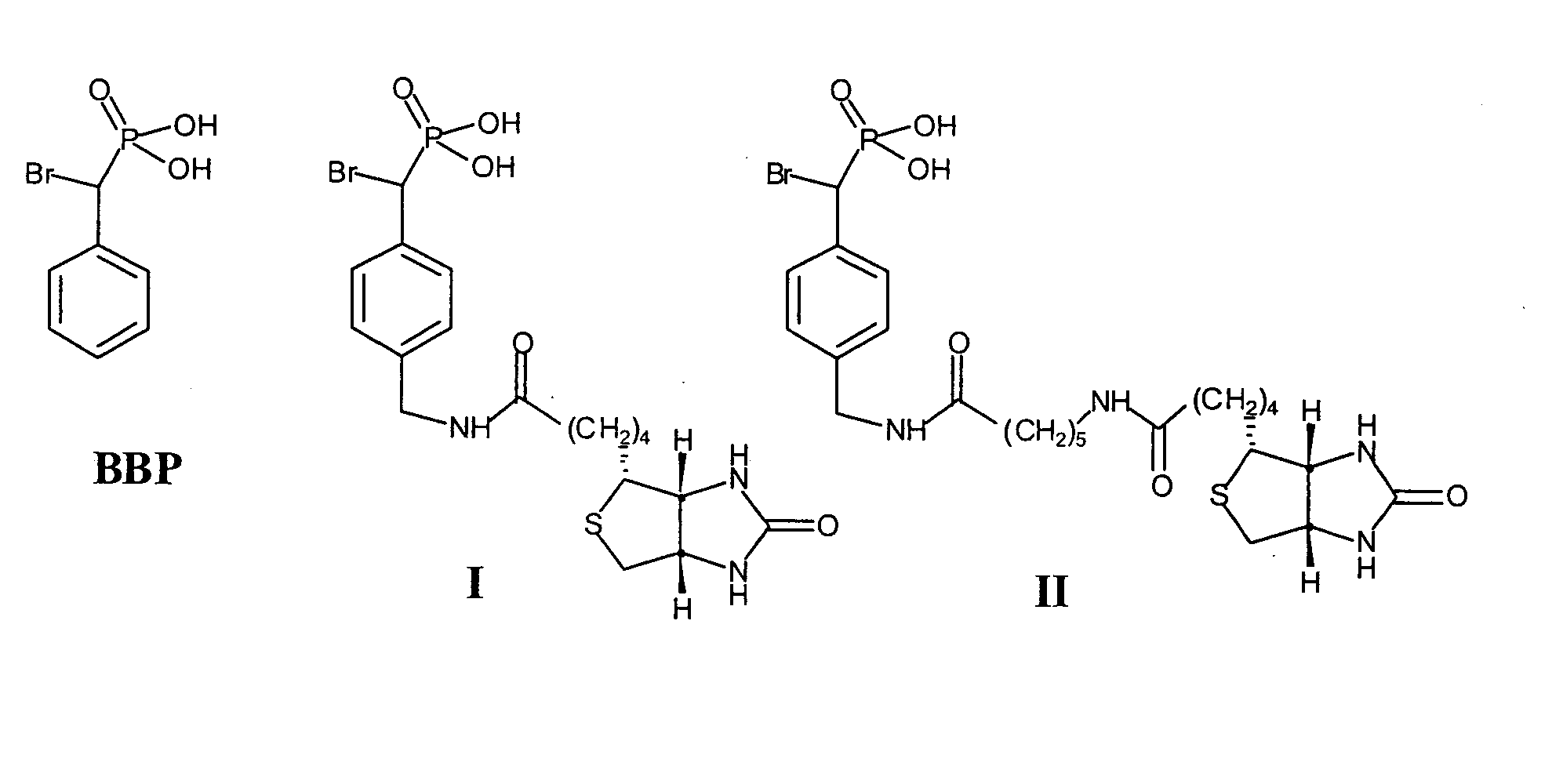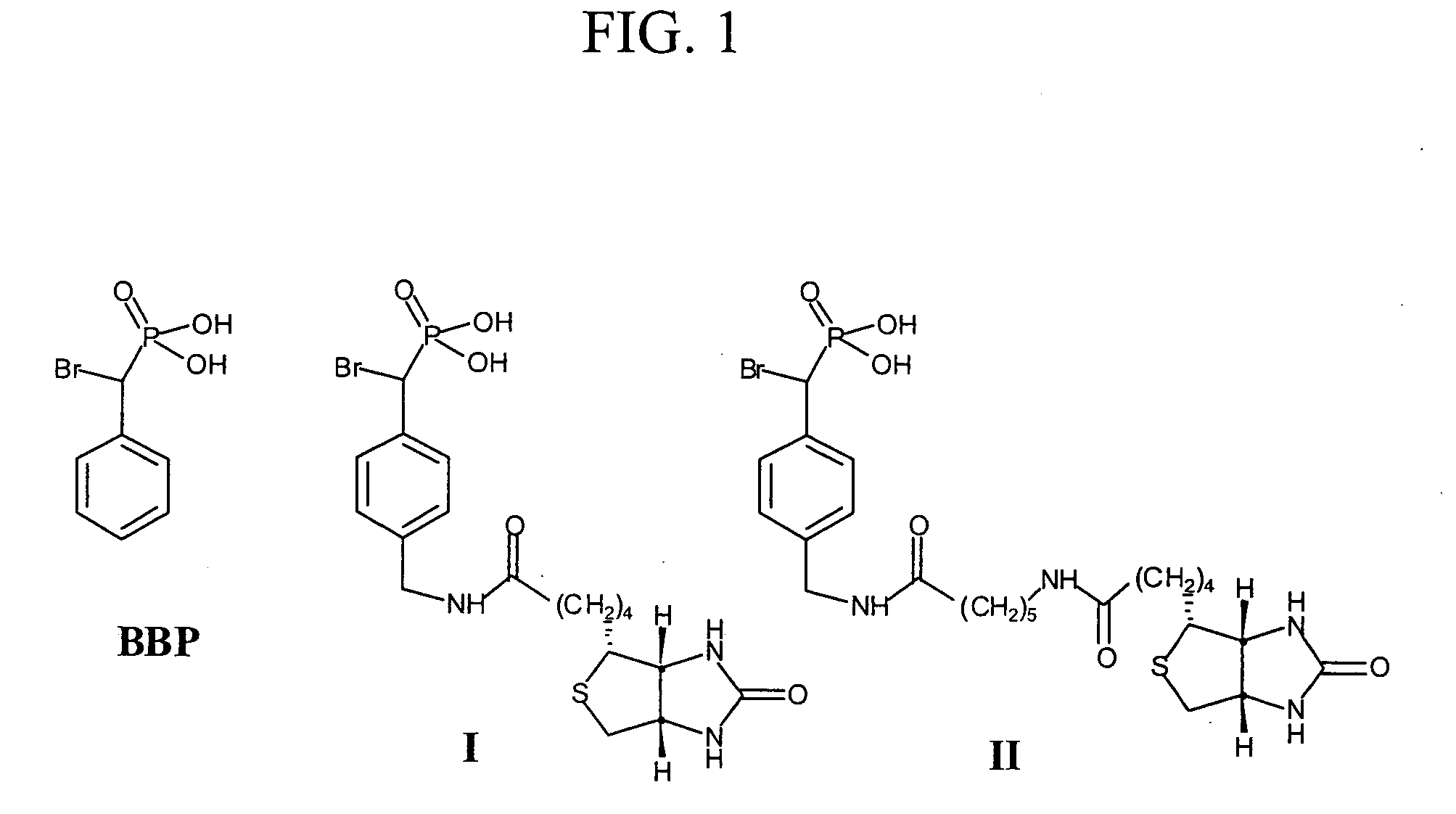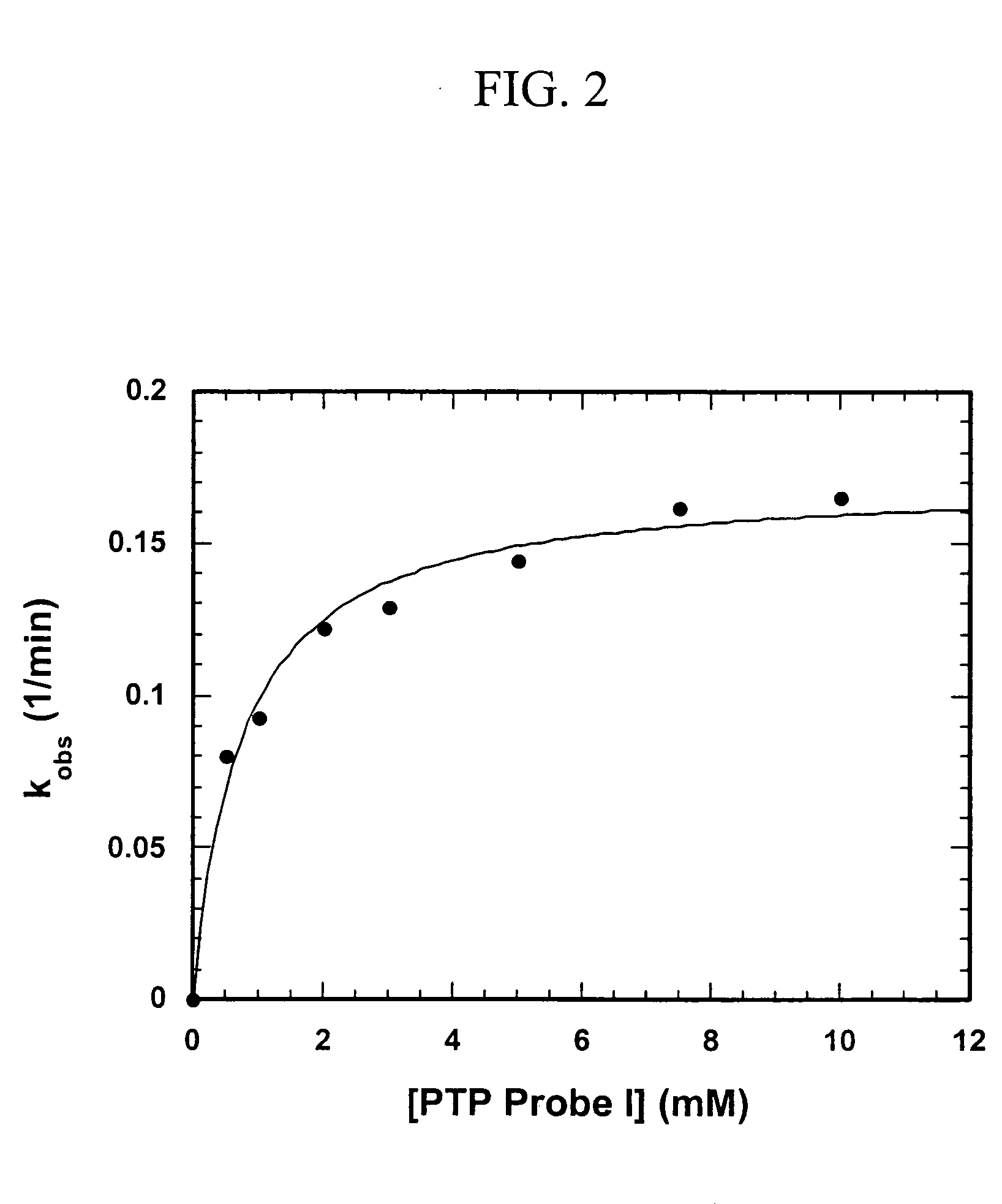Activity-based probes for protein tyrosine phosphatases
a technology of tyrosine phosphatases and activity-based probes, which is applied in the field of activity-based probes for protein tyrosine phosphatases, can solve the problems of insufficient one gene at a time approach, insufficient compensatory changes, and inability to deal with the dynamics and complexity of the complement of proteins within the proteom
- Summary
- Abstract
- Description
- Claims
- Application Information
AI Technical Summary
Benefits of technology
Problems solved by technology
Method used
Image
Examples
example summary
[0084] Protein tyrosine phosphatases (PTPs) are involved in the regulation of many aspects of cellular activity including proliferation, differentiation, metabolism, migration, and survival. Given the large number and complexity of PTPs in cell signaling, new strategies are needed for the integrated analysis of PTPs in the whole proteome. Unfortunately, the activities of many PTPs are tightly regulated by post-translational mechanisms, limiting the utility of standard genomics and proteomics methods for functional characterization of these enzymes. To facilitate the global analysis of PTPs, we designed and synthesized two activity-based probes that consist of a-bromobenzylphosphonate as a PTP specific trapping device, and a linker that connects the trapping device with a biotin tag for visualization and purification. We showed that these probes are active site-directed irreversible inactivators of PTPs, and form covalent adduct with PTPs involving the active site Cys residue. Additi...
example 2
Fluorescent-Based PTP Probes
Example Summary
[0118] In continuation of our efforts to develop activity-based probes for protein tyrosine phosphatases, fluorescent-based activity-based probes were developed. Two main advantages of such fluorescent-based activity-based probes are that (i) these probes are ultra sensitive and (ii) the analysis precludes the need for antibody-based detection, which can be rather cumbersome. The general structure of the probe is as shown in Formula B:
where R is a fluorescent moiety.
[0119] More specifically, the following two fluorophores were incorporated and tested: (a) Lissamine™ Rhodamine B (b) Cy 5. The structure of these two probes is shown in FIG. 9.
[0120] These fluorescent-based PTP probes can be used to detect active PTPs in complex proteomic mixtures and are at least 1000-fold more sensitive than antibody-based probes.
Experimental Procedures
Synthesis of Lissamine™ Rhodamine B and Cy5 Based PTP Probes
[0121] The following protocols were a...
PUM
| Property | Measurement | Unit |
|---|---|---|
| Time | aaaaa | aaaaa |
| Mass | aaaaa | aaaaa |
| Fluorescence | aaaaa | aaaaa |
Abstract
Description
Claims
Application Information
 Login to View More
Login to View More - R&D
- Intellectual Property
- Life Sciences
- Materials
- Tech Scout
- Unparalleled Data Quality
- Higher Quality Content
- 60% Fewer Hallucinations
Browse by: Latest US Patents, China's latest patents, Technical Efficacy Thesaurus, Application Domain, Technology Topic, Popular Technical Reports.
© 2025 PatSnap. All rights reserved.Legal|Privacy policy|Modern Slavery Act Transparency Statement|Sitemap|About US| Contact US: help@patsnap.com



